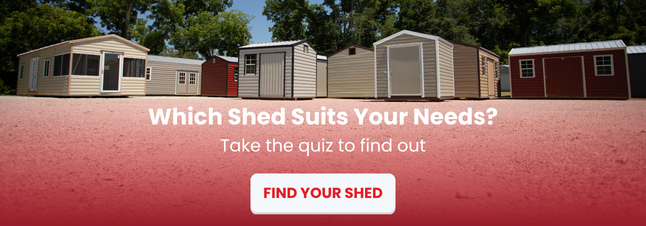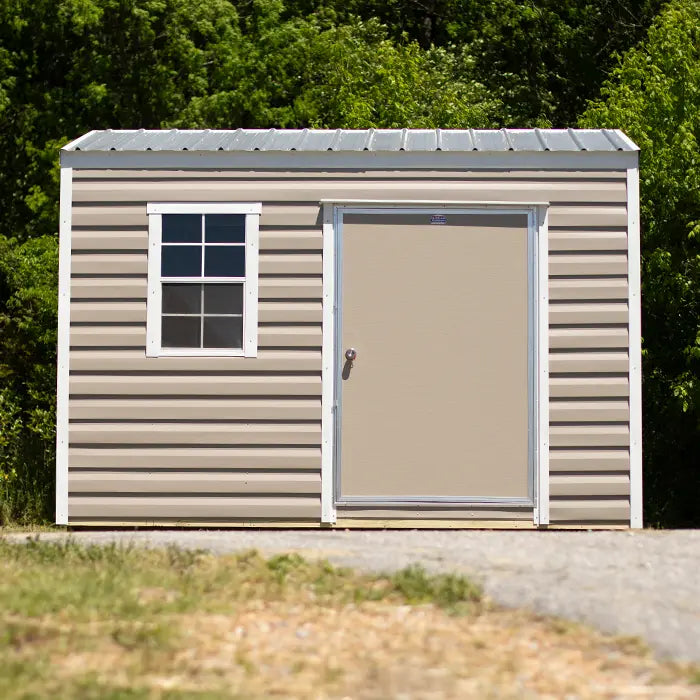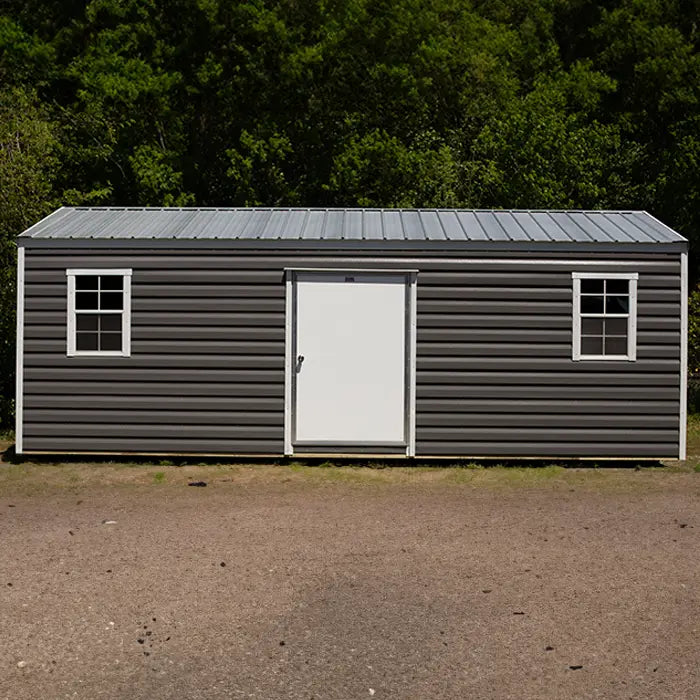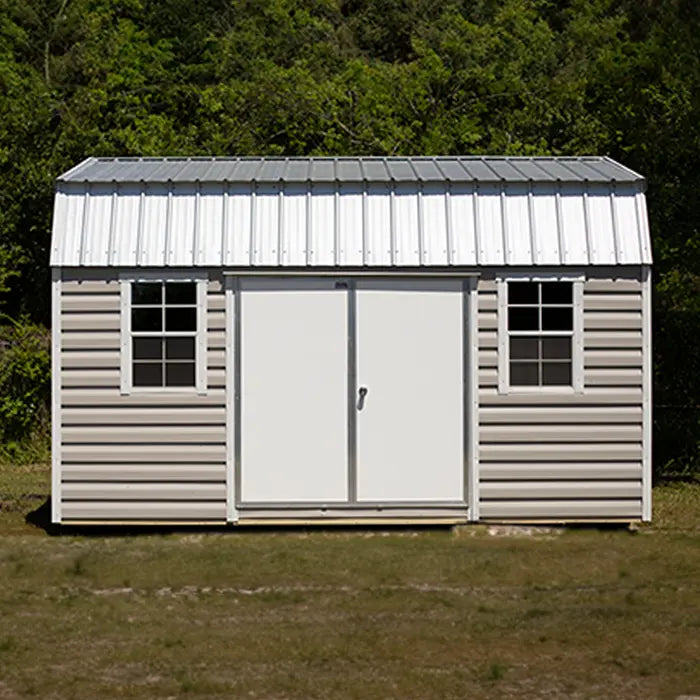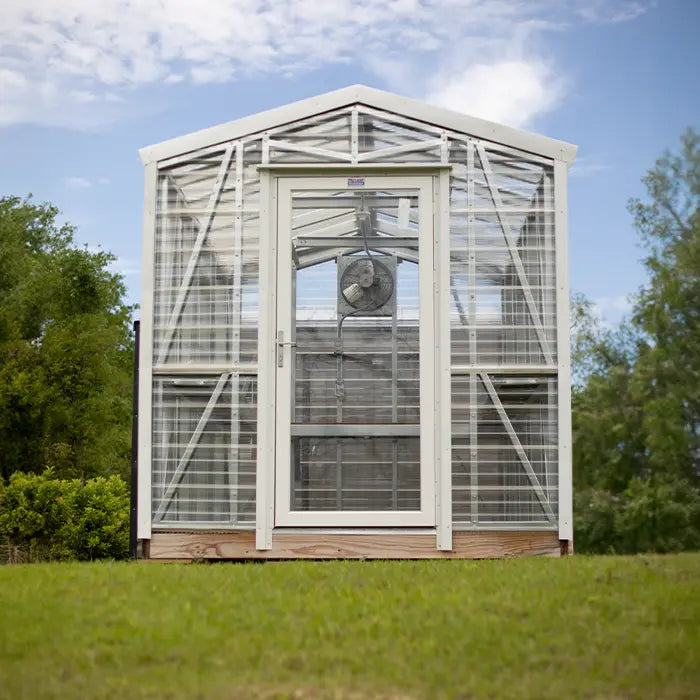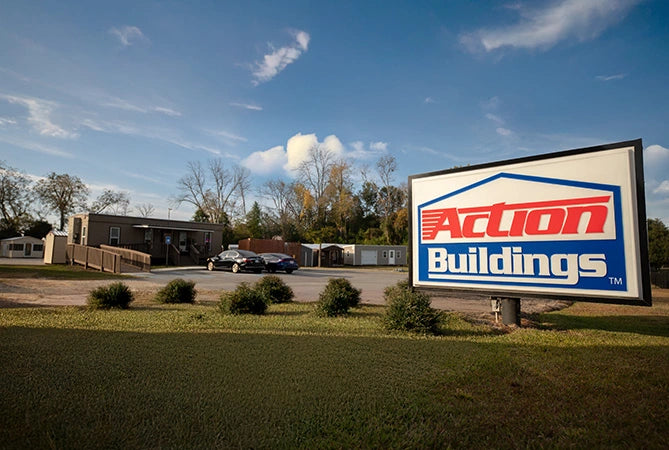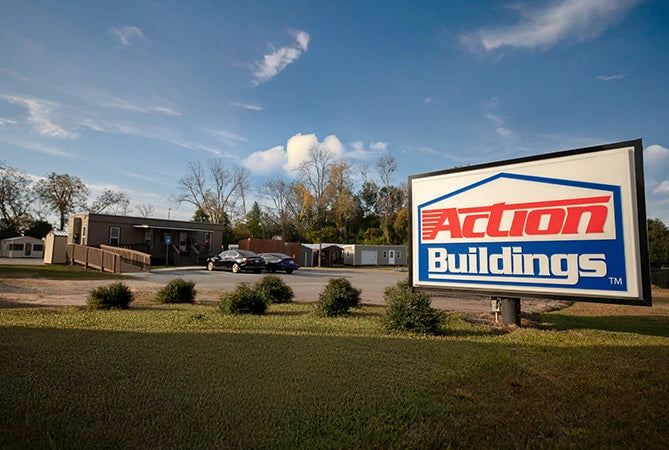If you’re planning to invest in a portable shed, it’s crucial to not overlook proper site preparation. Just like any other building structure, creating a solid, sturdy, and well-prepped foundation is the key to ensure the longevity of your shed. So, let’s explore why portable shed site prep and placement matter, the potential ramifications of neglecting this part of the installation process, and the importance of choosing the right location on your property. You’ll soon be equipped with the knowledge and confidence to set your portable shed up for success
Why Portable Shed Site Prep & Placement Matter
When getting a portable shed, you might be surprised by all the choices and considerations you’re faced with. From the size and building material to location and placement, all of these factors can impact the functionality and longevity of portable storage sheds.
First and foremost, let's talk about drainage and its importance when choosing where to put your lofted or mini shed. You want to make sure that the soil beneath your shed is able to effectively drain water away from the structure. If the site is not properly graded or lacks proper drainage, you might find yourself dealing with some serious issues down the line. We're talking about potential structural damage, rot that can arise from water pooling, or even water or moisture damage to the items inside your building—yikes!
Another thing to consider is the topography of the ground beneath the shed. If it's not level, you might encounter a whole host of problems. Imagine trying to open and close doors that just won't cooperate. Plus, an uneven floor can lead to sagging as well as cause walls to bow and cabinets or counters to pull away from the wall. Ensuring that your shed is properly placed on level ground can save you from these headaches and keep your shed in tip-top shape.
Proper shed placement and site prep also play a role in accessibility and usability. You want to make sure that your shed is easy to navigate around and that you can effortlessly access its contents. If it's placed on uneven ground or in an inconvenient location, you might find yourself doing some acrobatics just to get to your belongings. Similarly, if you’re using your structure as a car or ATV shed, you’ll need to make sure you have plenty of space to navigate the vehicles into the building.
To avoid these potential issues and ensure your shed stands the test of time, it's essential to invest time to plan for proper site preparation and placement. Trust us, your shed will thank you for it!
Foundation Options for Your New Portable Shed
Once you’ve found the perfect shed for your home, you have several foundation options to consider. Each foundation type has its own set of pros and cons, and the style and size of your shed, your aesthetic preferences, and shed placement location may influence which option is best for your installation. Let's explore the different foundation options available for portable buildings and their suitability for various shed styles and sizes.
Concrete blocks (CMUs): Concrete blocks offer a cost-effective foundation option for smaller-sized sheds. They provide a stable base for your shed, but it's important to note that they may not offer the necessary structural support for larger-sized sheds. Concrete blocks are a popular choice for small buildings with a compact footprint and lighter weight.
Pavers: Pavers are a relatively cost-effective foundation option, particularly suitable for small sheds on flat sites. They provide a solid and level surface for your shed. However, it's worth mentioning that pavers may not work well for sloped sites, as they require a flat and stable base.
Plastic grid or permeable pavers: Similar to regular pavers, plastic grid or permeable pavers offer the added benefit of better drainage. They allow water to permeate through the surface, reducing the risk of water pooling around your shed. While they may be slightly more expensive than traditional pavers, the improved drainage can be an advantage in areas prone to heavy rainfall.
Gravel pad: A gravel pad is another cost-effective and durable foundation solution that’s suitable for sheds of various sizes. This option can be frost-proof and may be used on sloped sites without impeding smooth access to the shed door. A gravel pad also provides excellent drainage and helps prevent moisture-related issues.
Screw piles: Screw piles are an alternative to traditional concrete piers that can be easier to install. It's important to note that screw piles may raise the foundation off the ground, creating an inconvenient height difference at the entry/door of your shed.
Post and beam: Post and beam foundations offer a cheaper alternative to concrete. They can be frost-proofed with the addition of concrete footers. But, it's worth mentioning that using a post and beam foundation may be more challenging and could potentially void warranties of prefabricated sheds. This option is more commonly used for custom-built sheds.
Concrete piers: Concrete piers can be used as a standalone foundation solution or in conjunction with a crushed stone foundation. They provide excellent stability and can be installed on sloped sites. Keep in mind, though, that concrete piers require more labor and cost compared to other options.
Concrete slab: A concrete slab foundation can be a suitable choice for sheds in areas not susceptible to frost. Concrete slabs don't drain as well as gravel, which may increase the chance of rot and deterioration in the floor materials of your shed. Additionally, using footers with a concrete slab foundation provides the most durable solution, offering equal support across all points of the shed base. This option is best suited for larger sheds but may not be necessary for smaller structures.
If you’re looking for small buildings or sheds for sale in Georgia, be sure to ask the manufacturer if they recommend a specific foundation type. As experts, they may have additional insight into which foundation type is best for your shed.
6 Factors to Consider Before Choosing a Location for Your Portable Shed
From utility buildings to urban sheds, it’s all about location, location, location! Let's explore the factors you should consider when deciding on a location for your shed.
-
Sun exposure: Sheds with southern and western exposure will retain more heat compared to those with northern or eastern exposure. This can affect the temperature inside the shed and potentially impact items stored within. Consider the climate in your area as well as how trees or other structures may impact sun exposure and its effects on your shed's comfort and usability.
-
Proximity to the street: For portable storage buildings used for vehicles, boats, or outdoor toys, being closer to the street can facilitate easy access. However, keep in mind that closer proximity to the street may require additional permitting or zoning setbacks. Check with your local authorities to ensure compliance with regulations.
-
Proximity to other buildings on your property: If you frequently move between buildings, having the shed closer to your main residence or other structures can be convenient. For example, if you're using the shed for a small business or as a home office or studio, having it nearby can make it easier to access. On the other hand, if you plan to use the shed as a guest suite or for band practice, you may prefer it to be further away from your main residence to provide privacy and reduce noise.
-
Proximity to utilities: Placing your shed closer to utility access points can help reduce the costs associated with utility hookups, but could limit where you can dig or pour a foundation. Consider the location of utility lines and ensure that your shed's placement allows for easy access to necessary utilities.
-
Proximity to vegetation: Tree limbs and roots can pose threats to the roof and floor structures of the shed. However, large growth overhangs can also provide shade and keep the shed cool during hot months. Consider the balance between potential risks and benefits when it comes to vegetation near your shed.
-
Slope of the site: Depending on the slope, you may need to perform site grading before placing the shed to ensure a level foundation. This will help maintain the structural integrity of the shed and prevent any issues that may arise from an uneven surface.
The BONUS Benefit of Portable Sheds - Relocation!
While it’s a smart idea to be thoughtful and strategic about your shed placement, one of the major benefits of mobile storage shed buildings is their ability to be easily relocated as needed. Unlike site-built shed options, portable sheds that are prefabricated off-site offer the incredible flexibility to move them to a new location.
There are several reasons why you might need to relocate a shed. Perhaps you're planning to put up a new structure on your property and need to make space. Or maybe you're undertaking landscaping projects and want to reposition the shed to create a more functional outdoor space. You may even be moving to a new property and want to take your shed with you. Whatever the reason, the ability to relocate a moveable storage shed provides convenience and peace of mind.
So, how does the shed moving process work? With prebuilt sheds, it’s relatively straightforward. It's generally recommended to hire professionals who have the necessary medium-duty machinery to safely lift and transport the shed. They will carefully lift the shed using equipment such as a front loader or skid steer. Alternatively, if you prefer a DIY approach, you can use automotive jacks to elevate the shed and then roll it on a homemade aluminum tubing "conveyor" system. However, it's important to note that hiring professionals with the appropriate equipment and expertise is the safest and most efficient option.
When relocating a shed, it's crucial to plan the move carefully. Ensure that the new location is suitable for the shed's size and style, and that any necessary permits or approvals are obtained. Additionally, consider the logistics of the move, such as transportation routes and any potential obstacles along the way.
Invest in Your Property with a Durable Portable Shed
Choosing the right site and preparing it properly are vital steps in ensuring the longevity and functionality of your portable shed. By being mindful of factors like drainage, level placement, sun exposure, proximity to other structures, and site slope, you can identify an ideal environment for your shed.
If you’re ready to find a durable and high-quality portable shed, look no further than Action Buildings. With our range of high-quality, prefabricated options, you’ll find the best portable shed to transform into the ultimate storage space, tool shed, or mobile garage. Or, expand your living space with a portable shed with a porch, perfect to create your very own “she shed.”
Take the next step in your shed buying journey. Invest in your property and create a versatile outdoor space with a durable portable shed from Action Buildings. Get in touch now and let us guide you towards the shed of your dreams!
